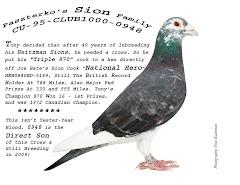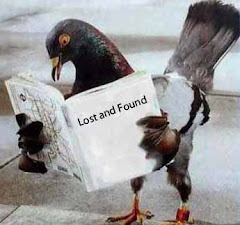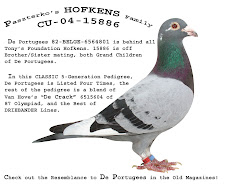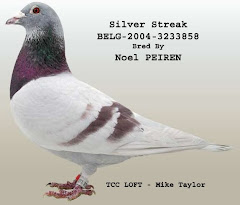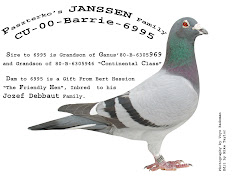A good deal has been written about it, but we prefer the ideas of our good friend Jacques Tournier of Lommel. We decided to get his opinion on the wing theory, which has been dealt with as a subject in many books, and this is what he has to say.
"To be of service to this interesting writer and to possibly other readers, we shall try to put our opinion down on paper, in the following few lines. First, we should like to call to mind the fact that this is not the first time that this subject has been brought up. In our country, one may assume that the wing theory on the whole, has been set forth by the designer and the promoter, but has not been accepted by the majority of the fanciers. One cannot deny the value of this brochure, as written by the eighty-year old Vanderschelden, which was part of his scientific work on different types of wings. His work left nothing unmoved, in an attempt to prove that certain forms and qualities of the wing are of influence on the flying ability of birds in general, and of the racing pigeon in particular. Because the case has not been proven 100%, and since so many fanciers may possibly count on these opinions, we shall have to leave this matter somewhat undiscussed; these grapes are just too green for us, and there are probably experts in this field who know more about this than we do. Where we and the majority of other fanciers disagree with the author of the theory has to do with the fact that this author thrusts all other qualities of a pigeon into the background, and emphasizes exclusively the value of the wing only. Even if we assume that the prescribed and desired wing should be the ideal one, according to the theory, then we must still maintain that it will do no good for our hobby, to cull indiscriminately, and select only on the basis of a proven wing.
With all due respect for the opinion of others, we simply cannot accept a procedure whereby we do away with pigeons whose sporting value we cannot establish, merely because their wings do not stand up to the demands of the wing theory. By the very same token, cannot we accept the fact that there are other qualities required, which may have something to do with the flying and the breeding values of the bird? To list all such qualities is not necessary, but merely naming one - of what value is a bird that is poorly blessed with character or lacks ability to orientate properly? Our opinion compels us to state that, no matter what the wing should be like, in order to fly far and fast, should never be considered to be the only matter of importance, in the requirements of a good pigeon. In spite of all our years of experience, we simply do not know the exact measure concerning the external, tangible qualities of the racer. Lacking proven results, this is especially true of those main qualities which we can neither see nor feel!
As a result, we pay closer attention to the quality of the stock which is visible as hereditary qualities of descent. This should not prevent us from checking closely all features such as the eyes, body, head, throat, muscles and feathers - these are all important factors to be considered, affecting the condition and the health of the birds, as they do.
In conclusion, not to omit the wing as an important part of our considerations, we look into the space between the front and the back wing; we check the spacing of the last four flights and the ventilation caused by their positions. No matter what our preferences, the truly inner value of the racing pigeon has always been, and always will be, the cardinal point! At the auctions you may attend, keep your eyes open and your ears to the ground, and you will discover that the birds with the best flying or breeding records will be sold for the most money. While along these lines, we must not forget shows, where flying and breeding records are not taken into account at all, and where unknown and inferior pigeons quite often surpass the good ones by many points!"
Taken from 101 Methods
Part 1, Third Print
by Jules Gallez







